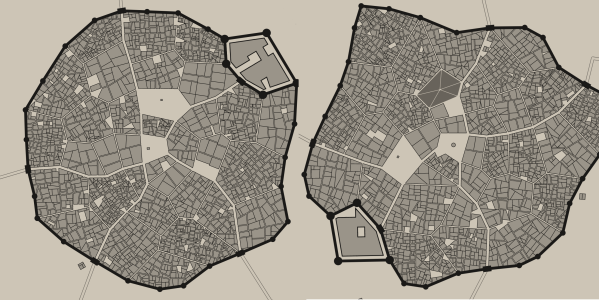With procedural content generation, you build data algorithmically rather than manually — think Minecraft worlds, replete with all the terrains and mobs you’d expect, but distributed differently for every seed. A lot of games use algorithms similarly to generate appropriate treasure and monsters based on the level of the character.
Game developer [Oleg Dolya] built a random city generator that creates excellently tangled maps. You select what size you want, and the application does the rest, filling in each ward with random buildings. The software also determines the purpose of each ward, so the slum doesn’t have a bunch of huge mansions, but instead sports a tangle of tiny huts. [Oleg] shows a little of how the application works, using polygons created with the guard towers serving as vertices. You can learn more about the project on Reddit.
As new as this project is, it’s limited. All the maps feature a walled community, each has one castle within a bailey, and none of the cities includes a river or ocean port. [Oleg] designed it to make cool-looking maps, not necessarily accurate or historically realistic ones. That said, he’s already tweaked the code to reduce the number of triangular buildings. Next up, he wants to generate shanty towns outside the city walls.











